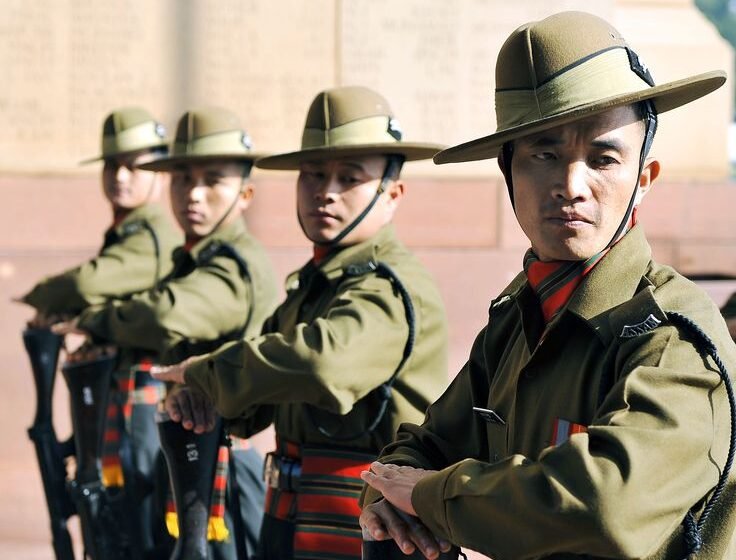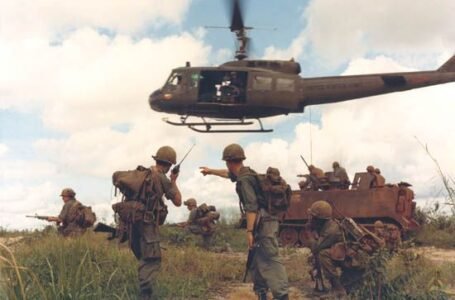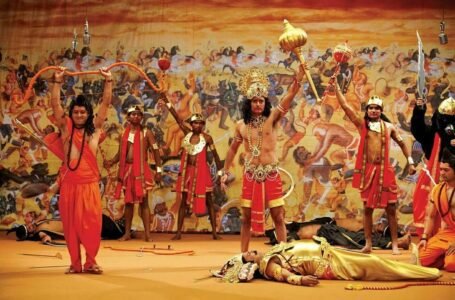Assam Regiment : Northeast Asia’s Fearless Defenders

Indian soldiers stand at attention during a wreath ceremony hosted by Secretary of Defense Robert M. Gates at the Indian memorial, India Gate in New Delhi, India Feb. 27, 2008. Secretary Gates met with the Indian Prime Minister and Minister of External Affairs during his trip to the region. Defense Dept. photo by U.S. Air Force Tech. Sgt. Jerry Morrison(RELEASED)
– Trushti Dand
The Assam Regiment was raised on 15 June 1941 in Shillong, then the capital of Assam under British India. The creation of the regiment was a response to the growing threat of Japanese advancement through Burma during World War II and the lack of adequate representation from India’s Northeast in the British Indian Army. Major (later Lieutenant Colonel) Ross Howman was the first commanding officer of the regiment.
This regiment was formed with troops from the seven northeastern states, primarily from the Ahoms, Nagas, Mizos, Meiteis, Gorkhas, Khasis, Garos, Bodos, and other hill tribes. Unlike traditional regiments based on caste or region, the Assam Regiment was distinct in its ethnic diversity, united by common loyalty and terrain expertise. Its motto is “Asam Vikram”, meaning “Valor of Assam”, and its war cry is “Rhino Charge!”, reflecting the one-horned rhinoceros—its regimental insignia and the state symbol of Assam.
World War II Campaigns
Soon after its formation, the 1st Battalion of the Assam Regiment (1 Assam) was sent into action in World War II. Its baptism by fire came during the Burma Campaign, where it played a vital role in halting Japanese advances into Northeast India. The regiment displayed exceptional jungle warfare skills, knowledge of terrain, and resilience under fire—making it a formidable force in difficult terrains.
The battalion earned six battle honours and theatre honours for its participation in battles such as the Battle of Kohima, Jessami, Arakan, Kyaukchaw, and Pongyi. These battles were fought in dense forests and hilly terrain, conditions that suited the regiment’s mountain-trained troops. The Battle of Kohima (1944), often called the “Stalingrad of the East,” saw the Assam Regiment hold their ground bravely against Japanese attacks, buying critical time for reinforcements.
In recognition of its performance, the 1st Battalion earned the nickname “The Rhino Warriors” and was presented colours (a rare honour) by the British government in 1946.
Post-Independence Conflicts
After independence in 1947, the Assam Regiment was integrated into the Indian Army and played active roles in all major conflicts. In the Indo-Pak War of 1947–48, its battalions were deployed to Jammu & Kashmir, tasked with defending strategic passes and regions threatened by tribal and Pakistani intrusions. Assam Regiment troops helped stabilize frontlines in Uri, Tithwal, and Naushera, demonstrating the same jungle tenacity they had shown in Burma.
In the 1962 Sino-Indian War, the regiment was deployed along the Kameng and Walong sectors of Arunachal Pradesh. Despite being outnumbered and outgunned, troops from Assam Regiment, particularly 4 Assam, engaged Chinese forces in multiple skirmishes and counterattacks. The soldiers fought gallantly despite logistical challenges and harsh winter conditions. Their defence delayed the Chinese advance and saved critical territory.
1965 and 1971 Indo-Pak Wars
During the 1965 Indo-Pak War, Assam Regiment battalions served in the Punjab sector. Their primary role was defensive, and they contributed to fortification and border security in critical zones. Their discipline, agility, and cohesion drew praise from higher command.
In the 1971 Bangladesh Liberation War, the Assam Regiment was deployed in both Eastern and Western fronts. 7 Assam and 8 Assam were part of the Jessore and Khulna offensives under Eastern Command. Their swift movement, stealth tactics, and terrain adaptability allowed them to operate effectively through marshy and riverine terrain. The battalions secured bridgeheads, intercepted Pakistani troop movements, and liberated several towns in coordination with the Mukti Bahini. Post-war, Assam Regiment battalions were among the first to enter and hold ground in liberated Bangladesh.
Counterinsurgency and Peacekeeping Roles
From the 1980s onward, the regiment has been extensively engaged in counterinsurgency operations in Jammu & Kashmir, Assam, Nagaland, Manipur, and Mizoram. Assam Regiment soldiers, being familiar with the terrain and dialects of the Northeast, proved crucial in curbing insurgency through Operation Rhino, Operation Hifazat, and Operation Rakshak. Their understanding of regional sensitivities has made them effective both militarily and culturally in sensitive operations.
The regiment has also participated in multiple United Nations Peacekeeping Missions, including deployments to Lebanon, Congo, and Sudan. In these international missions, the troops of the Assam Regiment were recognized for professionalism, discipline, and humanitarian engagement, earning commendations from UN commanders and international allies.
Contributions to the Kargil War
Although not heavily deployed in frontline combat during the Kargil War of 1999, Assam Regiment units provided vital logistical and surveillance support in Drass and Kargil sectors. Troops helped man secondary lines and forward posts in high-altitude areas, maintaining supply routes and relieving other units. Their alpine warfare training proved helpful in the difficult terrain of Ladakh.
Regimental Honours and Decorations
Over the decades, the Assam Regiment has earned multiple battle honours, unit citations, and individual gallantry awards. These include Shaurya Chakras, Sena Medals, Vishisht Seva Medals, and Mention-in-Despatches for bravery in war and peace.
The regiment was conferred the President’s Colours on 23 March 1971, an honour granted to units with exemplary service. Several battalions have received Army Chief Unit Citations and GOC-in-C Commendation Cards for their role in counterinsurgency and operational deployments.
Notable Officers and Heroes
While the regiment’s ethos is collective bravery, certain individuals have stood out for their gallantry. Lt. Rustomji Homavazir was among the early officers who helped build the regiment’s unique ethos post-independence. In more recent years, soldiers like Naik Joginder Singh and Subedar Babulal Yadav were awarded gallantry medals for counterinsurgency operations in Jammu & Kashmir.
Captain Jintu Gogoi, though from Assam but not from the regiment, has often been seen as a symbolic face of Assam’s martial contribution to the Indian Army, inspiring many young recruits to join the regiment.
Regimental Centre and Structure
The Assam Regimental Centre is located in Shillong, Meghalaya, nestled in the hills from which the regiment draws much of its manpower. The centre trains new recruits in jungle warfare, counterinsurgency, and mountain warfare, with a focus on discipline and ethnic harmony. The regimental museum at Shillong displays the rich history, war trophies, weapons, and uniforms used in various campaigns.
Today, the Assam Regiment consists of more than 20 battalions, including regular infantry, Territorial Army units, and Rashtriya Rifles detachments. Recruitment is based on representation from all northeastern states, ensuring ethnic diversity and unity under the regiment’s banner.
Culture, Identity, and Traditions
The Assam Regiment is perhaps the most culturally vibrant regiment in the Indian Army. Reflecting the diversity of Northeast India, the regiment incorporates traditional elements from Naga, Mizo, Assamese, Khasi, and Garo culture in its dress, celebrations, and war cries. The Rhino, which appears in the regimental insignia, symbolizes strength, territorial defence, and unique regional identity.
The troops wear distinctive black gaiters, and the regiment’s pipe band, dressed in tribal-inspired ceremonial dress, is a highlight in military parades. Festivals like Bihu, Hornbill Festival, and Chapchar Kut are celebrated within regimental quarters with cultural unity.
Their marching song and ceremonial war cry—“Rhino Charge!”—evoke their origins and commitment to fierce combat and regimental pride. The regimental motto, “Asam Vikram”, not only signifies valour but also the collective strength of the diverse tribes of the Northeast.
Strategic Significance and Modern Role
Strategically located in the sensitive northeastern theatre, the Assam Regiment has been at the forefront of India’s Look East Policy, guarding international borders with China, Myanmar, and Bangladesh. Their deployments along the Arunachal Pradesh and Nagaland frontiers make them key defenders of the nation’s eastern gate.
In the current geopolitical scenario, their familiarity with jungle and mountain warfare makes them ideal for India’s evolving security needs, especially in terrain where traditional mechanized units may struggle. Their language skills and cultural familiarity also enhance local cooperation in sensitive counterinsurgency operations.
Legacy and Cultural Importance
The Assam Regiment represents not only the martial strength of the Northeast but also the region’s integration into India’s national identity. For decades, this regiment has been a source of pride for the Northeast, often underrepresented in national narratives. Young men from the hills and plains of Assam, Manipur, Nagaland, Meghalaya, Mizoram, and Tripura see the regiment as a noble career and cultural institution.
Its achievements in war, peacekeeping, and insurgency management have helped dispel stereotypes and brought the Northeast closer to the heart of India’s defence system. Communities take pride in the regiment’s sacrifices and victories, and many villages commemorate local heroes with memorials and songs.
The Assam Regiment stands not just as a military unit but as a symbol of unity in diversity, courage in adversity, and honour in service. Its soldiers continue to live up to the legacy of “Rhino Warriors,” proving time and again that the Northeast is home to some of India’s most fearless defenders.


